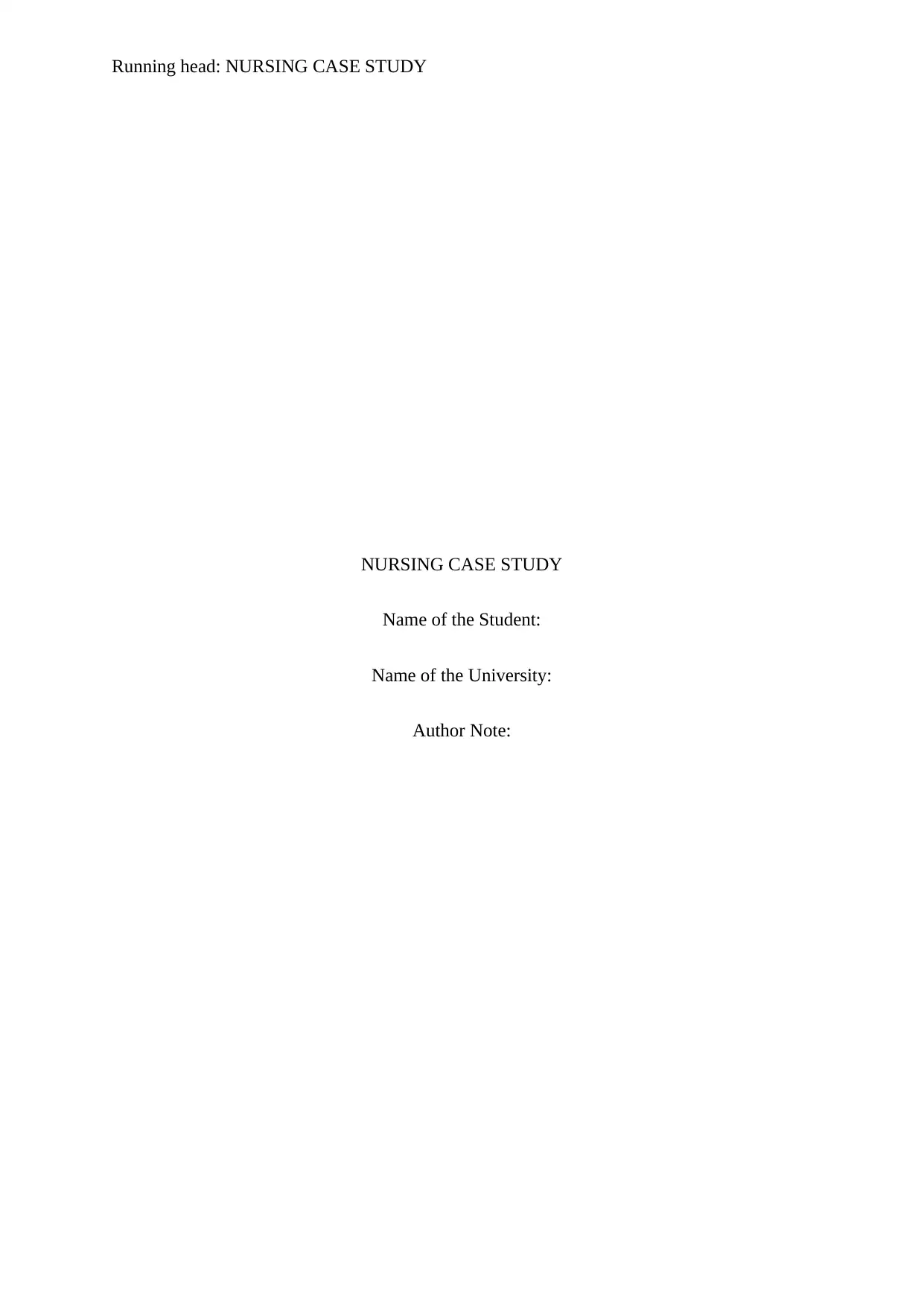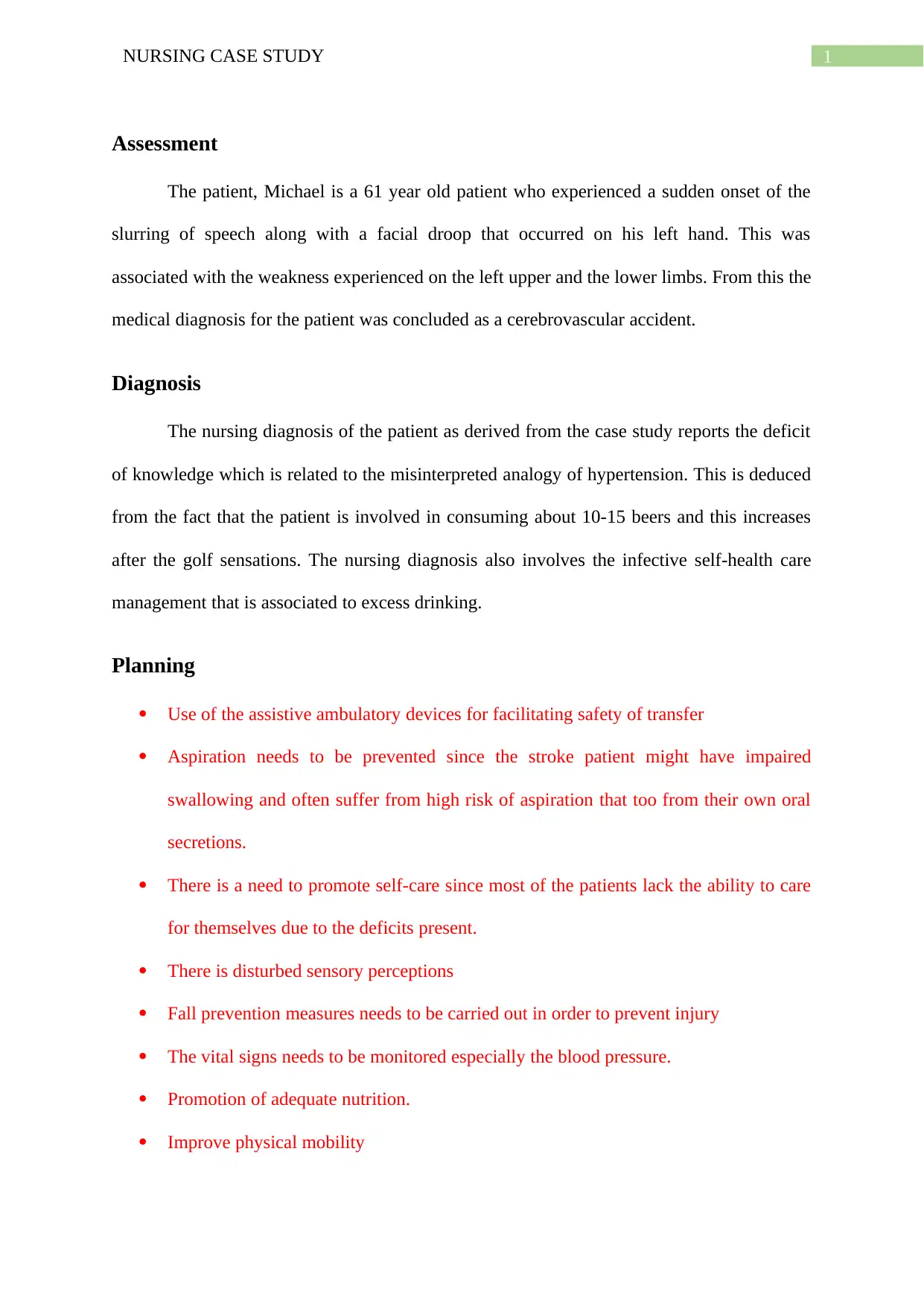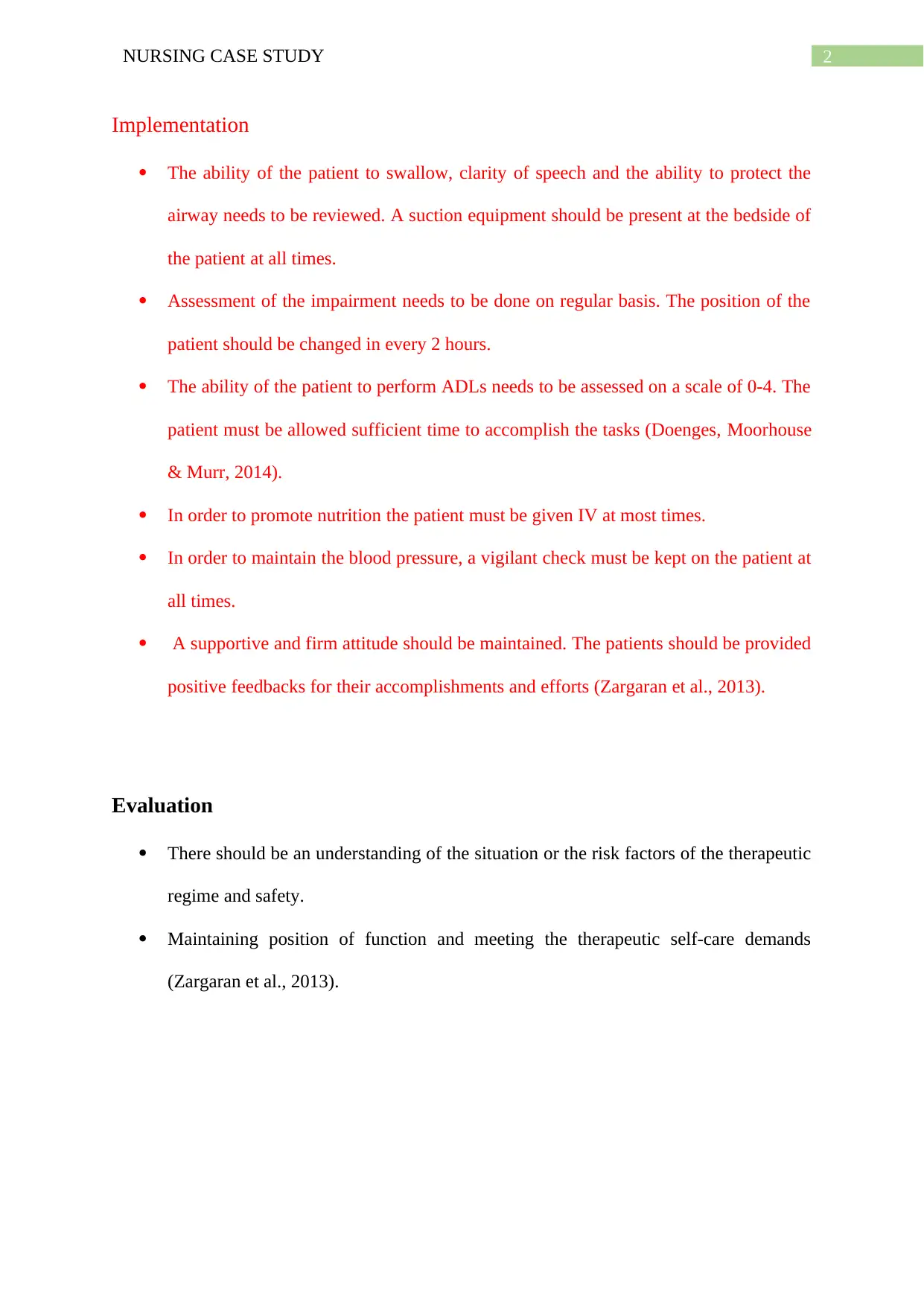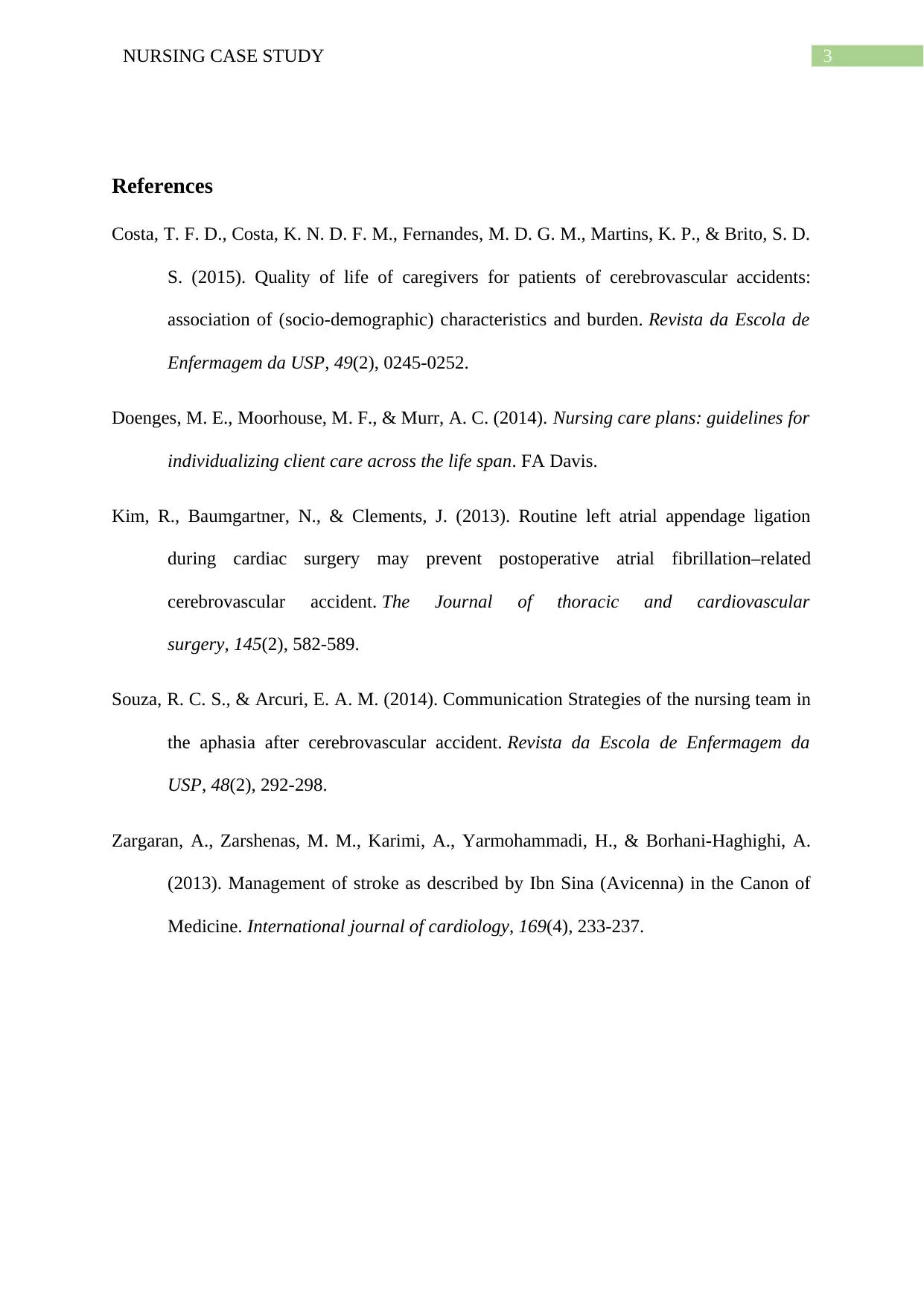Cerebrovascular Accident Nursing: A Comprehensive Case Study
VerifiedAdded on 2023/05/28
|4
|749
|272
Case Study
AI Summary
This nursing case study focuses on the management of a 61-year-old patient, Michael, who experienced a cerebrovascular accident. The case details his symptoms, medical history, and social habits. The primary nursing diagnoses identified are knowledge deficit related to misinterpreted understanding of hypertension and ineffective self-health management due to excessive alcohol consumption. The planning phase includes the use of assistive devices, aspiration prevention, promotion of self-care, addressing sensory perceptions, fall prevention, monitoring vital signs, ensuring adequate nutrition, and improving physical mobility. Implementation involves assessing swallowing ability, regular impairment assessments, assisting with ADLs, providing IV nutrition, vigilant blood pressure monitoring, and offering supportive feedback. The evaluation phase focuses on the patient's understanding of risk factors, adherence to the therapeutic regime, and ability to meet self-care demands. The case study emphasizes the importance of a comprehensive nursing approach in managing cerebrovascular accidents and improving patient outcomes. Desklib provides access to a wealth of similar solved assignments and past papers to aid students in their studies.
1 out of 4











![[object Object]](/_next/static/media/star-bottom.7253800d.svg)